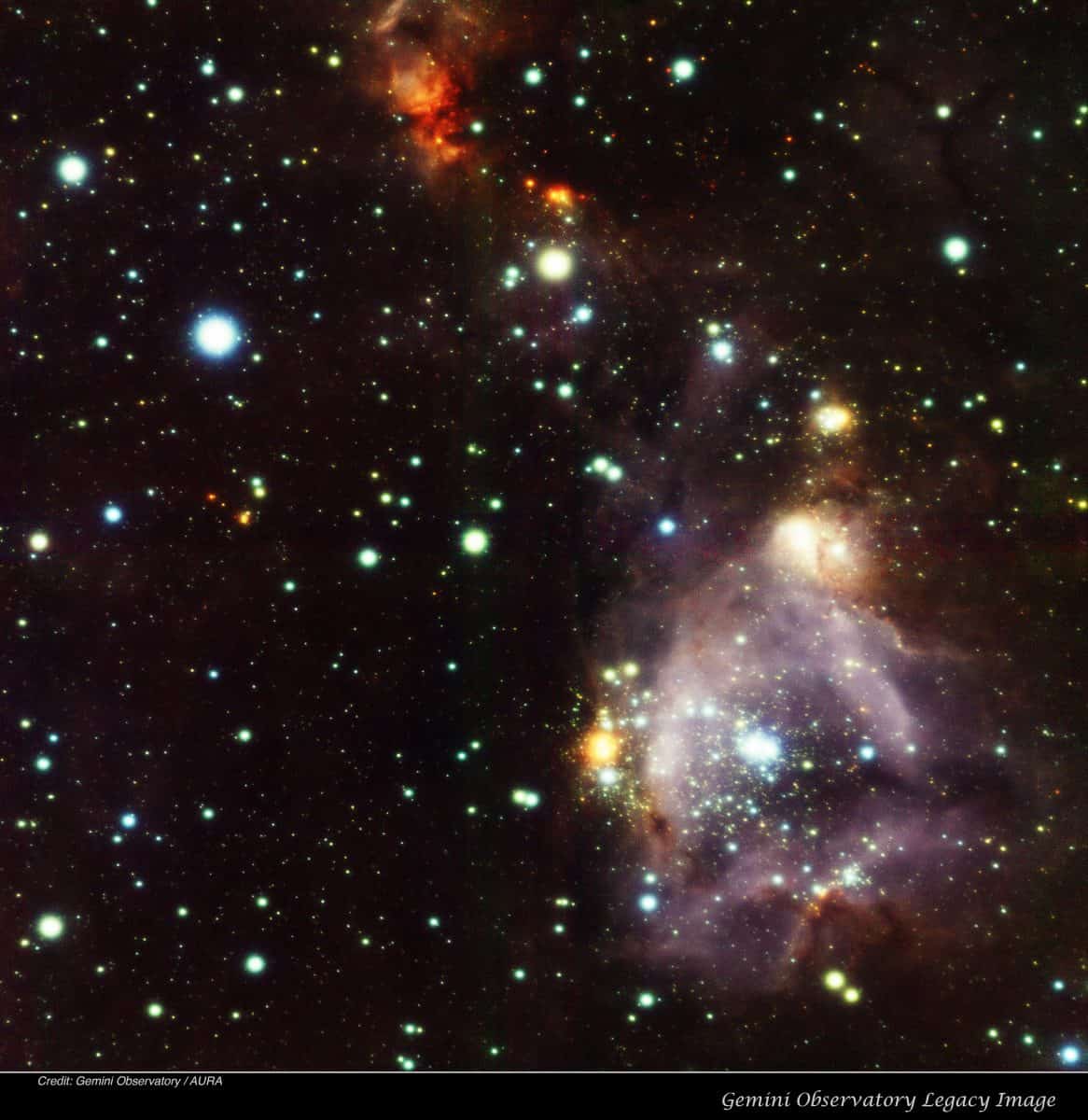The Cosmos with N159W
An unprecedented view from the Gemini South telescope in Chile probes a swarm of young and forming stars that appear to have been shocked into existence. The group, known as N159W, is located some 158,000 light years away in the Large Magellanic Cloud (LMC), a satellite to our Milky Way Galaxy. Despite the group’s distance beyond our galaxy the extreme resolution of the image presents researchers with a fresh perspective on how prior generations of stars can trigger, or shock, the formation of a new generation of stars.
“Because of the remarkable amount of detail, sensitivity, and depth in this image we identified about 100 new Young Stellar Objects, our YSOs, in this region,” says Benoit Neichel of the Laboratoire d’Astrophysique de Marseille, who worked with PhD student Anais Bernard on the research. Bernard expects to complete her PhD based upon this work in 2017.
Bernard adds that YSO’s are very red objects, often still enshrouded in a cocoon of the natal material from which they were born. “What we are seeing appears to be groups of YSOs forming at the edge of a bubble containing ionized gas expanding from an older generation of stars within the bubble.” Astronomers refer to these areas of expanding gas as HII regions due to the abundance of ionized (energized) hydrogen gas. “In a very real sense these young stars are being shocked into existence by the expanding gas from these more mature stars,” said Bernard.
